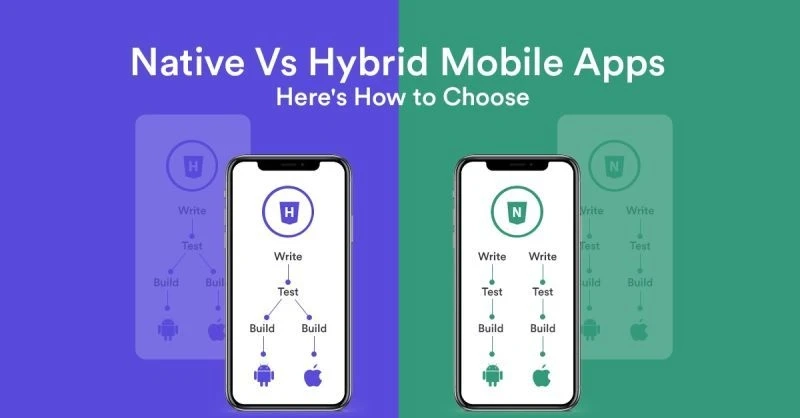It is likely that on more than one occasion this topic has caught your attention. When we hear “Native Applications” and “Hybrid Applications”, many ideas and concepts can come to our mind; some right, others maybe not. At Sparkout mobile app development company, we know that learning to correctly differentiate between a native application and a hybrid will allow us to develop our project by making the best decisions regarding the functionalities and features that we want to offer to our users.
What are Native and Hybrid Applications?
Native applications are those developed solely and exclusively for mobile operating systems, whether Android or iOS. On Android, the Java programming language is used, while on iOS Swift or Objective-C is used. The official languages for these programming languages are those of the corresponding operating systems.
On the other hand, when we talk about hybrid applications we are referring to those that use technologies such as HTML, CSS and JavaScript, all united and processed through Frameworks such as Apache Córdova – PhoneGap, Ionic, among others.
Advantages and Disadvantages
In relation to hybrid applications, it is important to keep in mind that they are developed only once; which means that a single application is programmed and it can be compiled for several operating systems, which is known as 'Cross-platform App'.
Regarding native applications, let's imagine a situation in which, as developers, we want to expand the number of users who use our application; That is, we want to develop an initial prototype on Android and iOS.
We must think about the operational resources we need to develop it, because an iOS and Android developer is necessary to create said application for both operating systems, which implies time and economic costs. So, you're probably wondering: is there a disadvantage, in this case, of opting for native applications?
Not necessarily. Everything will depend on the characteristics of the application to be developed.
For now, the balance leans, more towards hybrid applications; but the time has come to talk about the advantages that native applications have.
One of them is that these types of applications have fewer layers to be able to reach the device's own functionalities to perform an action. If we want to access the device's camera, GPS or sensors, the code is optimized so that the functionality is carried out quickly.
Imagine, for example, when we use Apple devices (iPhone, iPad, iPod, MAC). These are developed by the same people who develop the software, allowing the hardware resources to be used to the maximum. The same happens with native applications, because the programming language is optimized so that it consumes the device's resources as much as possible, allowing faster and more optimized applications.
If we talk about advantages in native applications, we will find many. Among the main ones we have:
Better performance
Lower memory consumption
Higher speed
Full use of the device hardware (Camera, GPS, Sensors, among others)
These features are a little more scarce in hybrid applications, whose performance is lower compared to native ones.
How to Detect a Native and a Hybrid Application?
When we download an application, it is difficult to detect if it is hybrid or native. User interfaces help a lot in this case. Expertise in mobile application development services plays a pivotal role in constructing seamless and indistinguishable user interfaces, ensuring a cohesive and user-friendly experience regardless of whether the app is hybrid or native.
iOS, for example, has identity in components such as buttons, text boxes, and checkboxes, among others. The same thing happens with Android, whose interfaces usually have their own identity, regardless of the design we apply to it. On the contrary, in hybrid applications, the components are variable and do not identify the style of a specific operating system.


